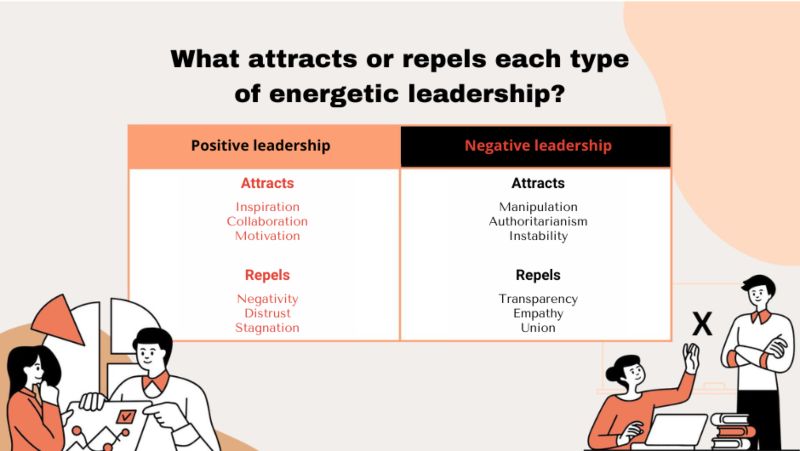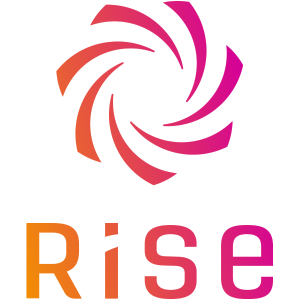In the dynamic context of today’s society, we are constantly challenged by the need to adapt to rapid change and navigate currents where the variables are not always completely clear. It is essential to understand how our leadership style influences teams in order to assist our leaders in acquiring additional skills to address the challenges that Jacob Morgan identifies as critical for leadership in the next decade: 2030.
Energetic leadership is a powerful catalyst in business. The ability to spread energy and enthusiasm defines energetic leaders, who shape a positive and productive environment for their teams.
Exploring the Types of Energetic Leadership, Daniel Goleman, in his Leadership: The Power of Emotional Intelligence (2013), identifies two primary types of energetic leaders:
- Empathetic Connectors: Focus on building strong relationships and creating community. They are skilled at listening, understanding and creating a positive, collaborative work environment.
- Innovative Visionaries: They direct their attention toward creating a better future. Their clear vision and strong purpose inspires others, inviting them to believe in their dreams and work together to realize them.
Positive Impact of Energetic Leadership
These leaders have a transformative effect on organizations. They increase morale, productivity, engagement and job satisfaction, forging a collaborative and positive environment.
Let’s review the 6 most important skills that leaders will have to deal with:
- Adaptability of Artificial Intelligence and technology: leadership cannot be conceived without them, being part of this new reality that brings fears and uncertainty. The challenge will be to integrate AI as an added value to management and to work with the team, fears and resistance to its implementation. We can find opposite poles: from an energy that attracts curiosity and opportunities to new ways of approaching work, to a leader who is not convinced, but feels the need to do it because it is a company regulation, will create ambivalent contexts where it will be difficult to deal with the team’s resistance and with his own, even if it is not explicit. In the first case, he will be a leader who attracts support for change, while in the second case he will have negative or contradictory reactions in relation to the new contexts.
- Agility in the face of change: Morgan conveys: “Change is constant and has always happened. What is different today is the speed at which change occurs”. For this, it is really necessary to unlearn what has been learned in order to give the opportunity to new knowledge, which is key to be at the height of the circumstances. Because of this, leadership is needed to accompany the process of uncertainty, frustration, creation and fear, valuing the process rather than the result.
- New Talent Landscape: in addition to the technical skills required of professionals, new ways of assessing inclusion and diversity skills must be sought. It is necessary to design new ways of attracting, understanding the particularities of each generation, especially the newest ones. It is time to challenge ourselves to unlearn the existing forms of retention and attraction in order to develop new approaches to attraction, training and preparation for the new inclusive and diverse skills of the future.
- Purpose and meaning: it is important to create a sense of belonging in people, a purpose that transcends the individual, feeling part of and contributing to the overall purpose of the company. At this point, one of the most appreciated values in leaders is required: integrity, to be coherent in what one says and what one does. In this way, you can be an inspiring example to others, seek genuine closeness to the motivators of others and, together, align objectives to contribute to the personal and organizational purpose.
- Morality, ethics and transparency: this aspect aims to contextualize vulnerable and transparent leadership in the organization. In this way, hierarchical positions are challenged and people are encouraged to maintain open, honest and, above all, responsible relationships. This new way of understanding leadership encourages them to be active, express their position, be transparent and authentic in their relationships. This will undoubtedly strengthen trust and, therefore, bring better organizational results.
- Globalization: Being open to the incorporation of a melting pot of ethnicities, leaders need to adapt their style to the different challenges. Understanding global contexts and particular cultures will allow them to generate closeness instead of imposing one way of doing things. To this end, the leader’s self-knowledge is key to understanding which cultural characteristics are more relatable and which others are a challenge. From there, an action plan should be developed to address the following objectives.
Now, what is the relationship between these skills and energetic leadership?
Several studies show that the act of thinking generates an energetic vibration where we attract certain realities. A thought generates an emotion and these energies move us to a certain action and/or reaction. In this way our way of thinking and feeling generates attraction to people and situations, awakening emotions and thoughts in others. For example, negative thoughts, thoughts of resistance and emotions such as frustration, impotence, fear and anger, energetically predispose us to retraction, combat or defensiveness. If a leader identifies with these characteristics, it is very likely that he or she will attract people by identification with these attitudes and repel others by the same. How do you imagine the adaptation of that team will be?
However, we know that we have not always been part of organizations where leadership positively impacts teams. In fact, there tends to be a negative energetic leadership style, where dealing with this type of energy is often very draining and overwhelming.
The adverse impacts of negative leadership are reflected in a drastic decrease in morale, productivity and commitment. In addition, conflicts, tensions and harassment situations can arise, undermining stability and well-being in the work environment.
On the other hand, if we have a leader with flexibility to listen to different perspectives, emotional agility, vulnerability and closeness in bonds, contexts of openness to dialogue, contribution, expressing emotions to generate a new motivator and accompanying will be generated. It is an energy that brings together, sustains and develops teams for change.
Finally, the diversity of energies that characterizes each leader gives rise to an infinite variety of team combinations. Against this backdrop, the question arises: What will be the challenge facing the leaders of the future? In a world where changing dynamics require adaptability and understanding of the diverse energies at play, the challenge will lie in the ability of leaders to tune into these varied frequencies, foster synergy among their teams and chart a path that inspires the best performance in each member. In this context, energetic leadership is presented as a fundamental tool to guide teams towards a future full of success and harmony.
Practical Tips for Empowering Your Energetic Leadership
Do you want to enhance your leadership? Here are some useful guidelines:
- Develop your emotional intelligence: Connecting with others on a personal level and creating a positive environment starts with understanding and managing your emotions and those of your team.
- Maintain a positive and optimistic attitude: Focus on the positive and spread your enthusiasm to others.
- Develop a clear and motivating vision: Inspire your team with a compelling and exciting vision for the future.
- Show passion and commitment: Find what you are passionate about and turn it into your work engagement driver.
- Communicate effectively: Improving your communication skills will allow you to convey energy and enthusiasm.
- Foster empathy and understanding: Developing empathy towards your collaborators generates an environment of mutual support and understanding.
- Build trust and respect: Creating an environment of trust fosters collaboration and productivity.
Therefore, recognizing signs of negative behavior and seeking support are crucial steps in dealing with this delicate situation.
Some telltale signs of this leadership style are pessimism, persistent negativity and lack of motivation. Leaders with this style tend to be authoritarian, manipulative and even dishonest in their dealings with others. These behaviors create a tense and unproductive work environment.
Negative Leadership Effects

And, with all the info we shared, what type of leadership do you identify with?
Bibliography:
Daniel Goleman, “Leadership: The Power of Emotional Intelligence” (2013)


